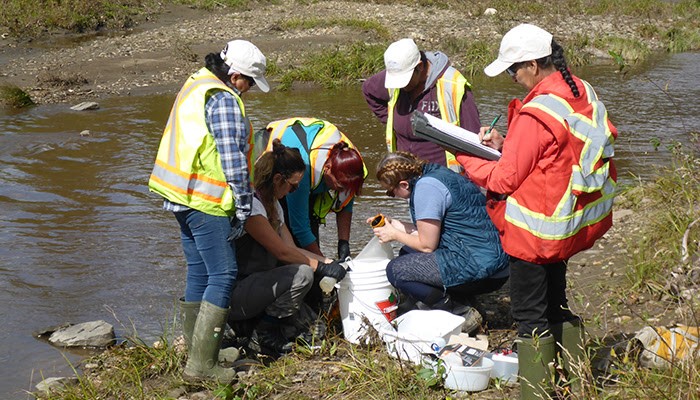Q&A: Streaming freshwater science from citizens

After WWF-Canada’s 2017 Watershed Report revealed data deficiency as a serious obstacle to ensuring freshwater health, we partnered with Living Lakes Canada, the University of Guelph and Environment and Climate Change Canada (ECCC) to create STREAM, or Sequencing the Rivers for Environmental Assessment and Monitoring. (Solid acronym, if we do say so ourselves.)
We spoke to our freshwater specialist Catherine Paquette to find out more.
How is STREAM helping freshwater ecosystems?
STREAM provides training, equipment and resources to groups interested in creating or expanding a monitoring project for benthic invertebrates, the small insects, worms, mussels and other creatures found at the bottom of waterways. Knowing which species are, or aren’t, present helps us understand how healthy an ecosystem is so, we can decide if it needs restoration to make it healthier or management and protection to keep it from becoming unhealthy.
How do you identify the species present?
We’re using state-of-the-art technology called DNA metabarcoding, which uses the genetic material found in the samples. This technology is quicker and less expensive than using taxonomy, where each individual is identified by sight using a microscope.
How is STREAM empowering citizen scientists?
Citizen scientists can be community groups, First Nations, watershed organizations, or individuals contributing meaningful data to a larger database. These groups have extensive local knowledge and contribute to a better understanding of our waterways.
How can someone become a STREAM citizen scientist?
We’re always looking to partner with more organizations across Canada! If you’re part of an organization interested in creating or expanding a benthic monitoring program, reach out to STREAM or myself. We can also help connect people to local groups that are already part of STREAM.

